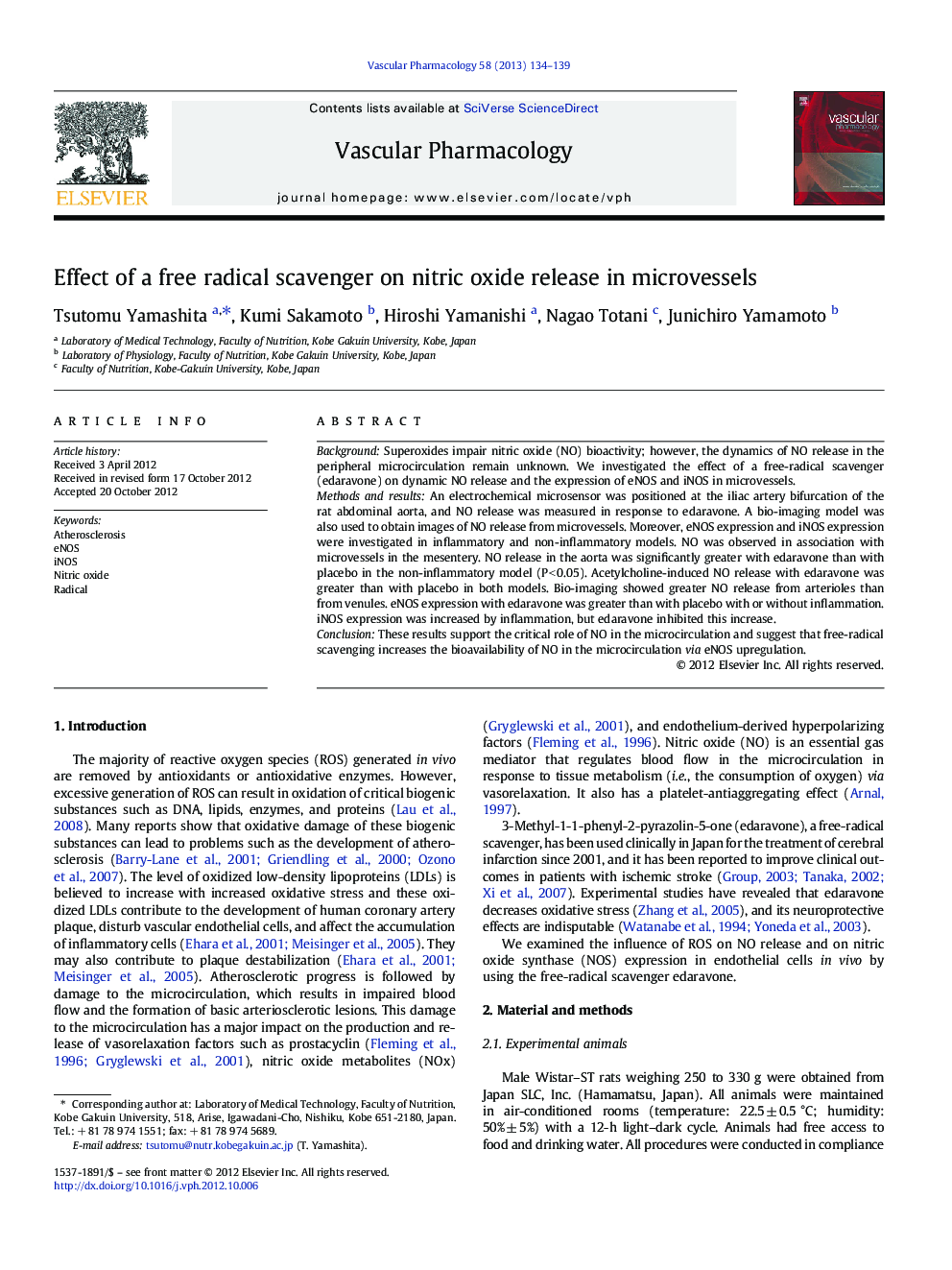| Article ID | Journal | Published Year | Pages | File Type |
|---|---|---|---|---|
| 5847353 | Vascular Pharmacology | 2013 | 6 Pages |
BackgroundSuperoxides impair nitric oxide (NO) bioactivity; however, the dynamics of NO release in the peripheral microcirculation remain unknown. We investigated the effect of a free-radical scavenger (edaravone) on dynamic NO release and the expression of eNOS and iNOS in microvessels.Methods and resultsAn electrochemical microsensor was positioned at the iliac artery bifurcation of the rat abdominal aorta, and NO release was measured in response to edaravone. A bio-imaging model was also used to obtain images of NO release from microvessels. Moreover, eNOS expression and iNOS expression were investigated in inflammatory and non-inflammatory models. NO was observed in association with microvessels in the mesentery. NO release in the aorta was significantly greater with edaravone than with placebo in the non-inflammatory model (PÂ <Â 0.05). Acetylcholine-induced NO release with edaravone was greater than with placebo in both models. Bio-imaging showed greater NO release from arterioles than from venules. eNOS expression with edaravone was greater than with placebo with or without inflammation. iNOS expression was increased by inflammation, but edaravone inhibited this increase.ConclusionThese results support the critical role of NO in the microcirculation and suggest that free-radical scavenging increases the bioavailability of NO in the microcirculation via eNOS upregulation.
Graphical abstractDownload high-res image (255KB)Download full-size image
